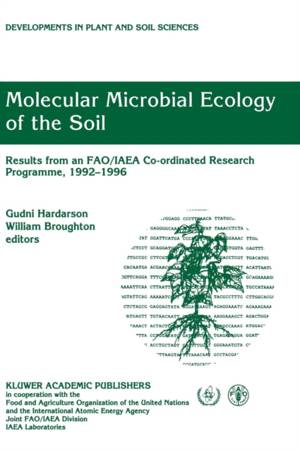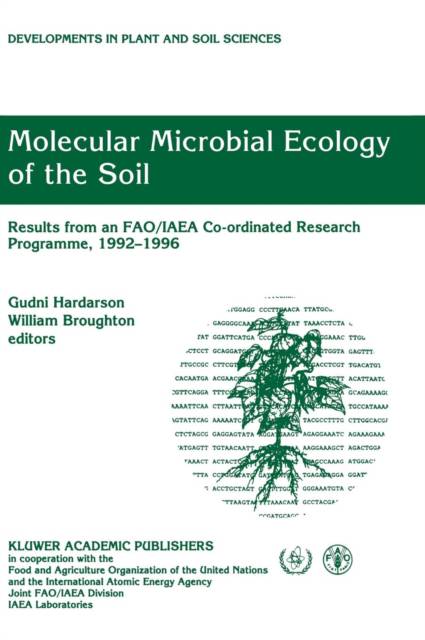
- Afhalen na 1 uur in een winkel met voorraad
- Gratis thuislevering in België vanaf € 30
- Ruim aanbod met 7 miljoen producten
- Afhalen na 1 uur in een winkel met voorraad
- Gratis thuislevering in België vanaf € 30
- Ruim aanbod met 7 miljoen producten
Zoeken
Molecular Microbial Ecology of the Soil
Results from an Fao/IAEA Co-Ordinated Research Programme, 1992-1996
€ 153,95
+ 307 punten
Omschrijving
Grain legume crops, e.g. common bean (Phaseolus vulgaris L.), and soyabeans (Glycine max L.) are amongst the main sources of protein in Africa, Asia and Latin America. Their high protein content derive from their ability, in symbiosis with Rhizobium bacteria, to fix atmospheric nitrogen.
Incorporating contributions from molecular biologists, microbiologists, plant breeders and soil scientists, this volume reports the results of an FAO/IAEA Co-ordinated Research Programme (1992-1996), whose main objective was to develop molecular biological methods to study rhizobial ecology. Use of better tracking methods will help enhance biological nitrogen fixation and thus grain legume yields, while reducing their reliance on soil- and/or fertilizer-nitrogen.
This volume will be invaluable to scientists working on biological nitrogen fixation, soil microbial ecology and legume production.
Incorporating contributions from molecular biologists, microbiologists, plant breeders and soil scientists, this volume reports the results of an FAO/IAEA Co-ordinated Research Programme (1992-1996), whose main objective was to develop molecular biological methods to study rhizobial ecology. Use of better tracking methods will help enhance biological nitrogen fixation and thus grain legume yields, while reducing their reliance on soil- and/or fertilizer-nitrogen.
This volume will be invaluable to scientists working on biological nitrogen fixation, soil microbial ecology and legume production.
Specificaties
Betrokkenen
- Uitgeverij:
Inhoud
- Aantal bladzijden:
- 168
- Taal:
- Engels
- Reeks:
- Reeksnummer:
- nr. 83
Eigenschappen
- Productcode (EAN):
- 9780792352525
- Verschijningsdatum:
- 28/02/1999
- Uitvoering:
- Hardcover
- Formaat:
- Ongenaaid / garenloos gebonden
- Afmetingen:
- 216 mm x 284 mm
- Gewicht:
- 816 g

Alleen bij Standaard Boekhandel
+ 307 punten op je klantenkaart van Standaard Boekhandel
Beoordelingen
We publiceren alleen reviews die voldoen aan de voorwaarden voor reviews. Bekijk onze voorwaarden voor reviews.







